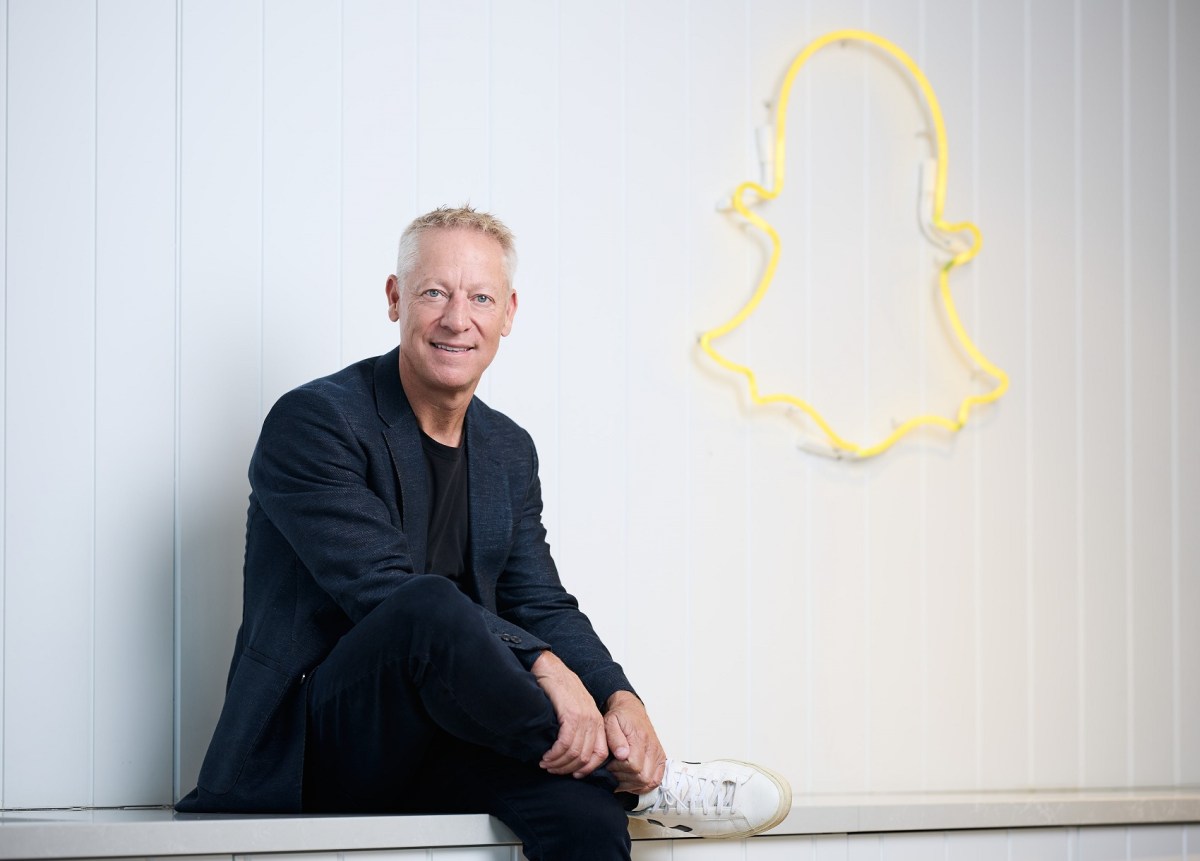Snap Australia and New Zealand managing director, Tony Keusgen has been at the helm since May 2023 and has entered the new year with great confidence in how the business will continue to evolve.
When he joined the business, his number one priority was understanding the size and scale of Snap as well as key audience insights.
“I was pleased to learn that there are over eight million people in Australia coming to Snap monthly, which is an incredibly large and specific audience,” Keusgen told Retailbiz in a recent interview.
“It’s a real privilege to be in a position where your platform pretty much owns the under 40s demographic in Australia, which are traditionally a hard-to-reach audience. We have a strong cohort of under 40s with 80% of 13- to 24-year-old Australians on Snapchat, 75% of 13- to 34-year-olds and almost 45% aged over 25. I’d call it specificity at scale.”
Keusgen believes the Snap team is in great shape to provide the right levels of customer service and drive results – particularly for retail businesses.
“We’ve got dedicated teams focused on retail who build relationships, understand the sector and its diverse challenges through to dedicated account managers and marketing scientists,” he said.
“Retail is a critical focus area for Snap both worldwide and here in Australia and one of the reasons is because we drive effective direct response results in the retail segment, so it’s important we partner closely with all retailers.
“No matter the size of the business, the message remains the same: be clear on your objectives in terms of media, advertising and marketing, and ensure you are set up to measure against those objectives.
“This year, we’re focused on delivering better results for retailers through more support and greater education and awareness in the marketplace around Snap in a retail sense, highlighting the scale and specificity of our platform.”
How to best leverage Snap
When considering Snap as a potential marketing platform, Keusgen says the number one question a business should ask themselves is, are under 40s important to me and the future of my business? “The answer should be a resounding yes, given it’s the customer of the future.”
He went on to say, “The second question should be, where can I find that audience and build a genuine engagement with them? There are a number of choices when it comes to where consumers spend their time and effectively, eight million people choose to spend their time on Snap and on average, they open the app 40 times a day. If that’s where they are, you need to figure out how to best have that conversation with them.

“Snap is not like traditional social media platforms and retailers are starting to understand this. When you open Snap, it opens to a camera – not an endless feed of posts, comments or feedback, that often puts people in a questionable mood. I am proud and feel comfortable about that, not only as a leader in the business, but also as a parent.”
According to Snap research, three-quarters (75%) of Snapchatters use the platform to communicate with trusted family and friends and over 90% of users feel happier on Snapchat than they do on any other platform.
“It’s not easy to make people on the internet feel happy and sometimes we underplay the value of happiness and its halo effect in terms of advertising,” Keusgen said.
“It’s also an important consideration as a brand wanting to connect – what mood are my customers in and how are they feeling when I put my brand in front of them? If you’ve got your target audience, drop them in a place where they’re feeling happy, then engage with them using the right media metrics.
“There’s an epidemic of loneliness, with one in three Australians saying they feel lonely or disconnected. I think that points to the difference between Snap and other platforms in a marketing sense. Snap keeps people genuinely and authentically connected with friends and family. More than ever, we’re relevant for our community and are helping go against this trend of loneliness.”
Another important insight for brands is that they may not be able to reach Snap’s audience elsewhere, given more than 40% (42%) of daily Snapchatters don’t use TikTok every day, according to research from GWI.
“If you’re not on Snapchat, you may not be finding them at all. Combined with the fact that Snap users are happier and more engaged and that’s going to enhance results.”
The evolving marketing landscape
Snap is seeing some of the most progressive and sophisticated marketers leaning into the platform in a positive and engaging way that’s also evidence based, according to Keusgen.
“For example, Uber’s ‘Get Almost, Almost Anything’ campaign basically defines the fact that Uber is in retail, and they’re focused on seeing the right metric outputs when they buy media,” he said.
Partnering with Snapchat, Uber leveraged two First Story ads to run the activity, targeted to their key audience of adults aged 18 and over. First Story allowed Uber to generate high reach, while capturing engagement for further retargeting to support consideration, achieving reach of over two million people in 24 hours, 205,000 video views and a swipe up rate of 1.3%.
“Our clients are starting to learn more about the richness of the Snap platform and we’re seeing them adopt at scale and most importantly, in a way that’s measurable, tangible and has a real return on investment (ROI).
“Snap has the reach to target the hard-to-reach customers and there’s increasing awareness around our direct response product suite. I’m passionate about driving results and I want to be a profit centre – not a cost centre – for our retail customers.”

Another one of Snap’s partners is at-home oral care brand, HiSmile. The Australian start-up’s founders, based on the Gold Coast, are now exporting globally with a mission to be in every household around the world.
Adopting a back-to-basics approach, the Hismile team embarked on Snap’s platform utilising Snap webview ads. HiSmile also embraced the 7/0 optimisation window tool, a recent feature on Snapchat Ads Manager tailored primarily for advertisers who prioritise last-click attribution.
The results surpassed all previous performance records, achieving an 861% increase in last-click conversion rate, 14% higher average order value (AOV), 1,003% increase in revenue per user (RPU) and 2,759% increase in last-click attributed return on ad spend (ROAS).
The potential of augmented reality
Keusgen expressed his passion for the opportunity around augmented reality (AR) in retail.
“Being able to give a human a virtual experience of a physical product is super exciting and it’s an opportunity for every retailer that has a product for the face or body. As a retailer, what can you do to put your product in the hands of every under 40 in Australia? That’s the proposition that we offer at Snap,” he said.
“Businesses are realising if they can let customers put a product on their face in a virtual world, it’s going to create a great experience. They may buy it online or come into the store and try it on. They may also take photos and Snap it.
“MECCA has been running core advertising on Snap and building an affinity with its community for some time, we started thinking, what could we do better? We built a lens for people to be able to try on different shades of lipstick and all of a sudden, the metrics just skyrocketed. The response was so strong they had to shut down the campaign. It achieved 2.4 times return on spend (ROS).”
While AR is not a completely untapped opportunity, it’s a wide open opportunity for retailers to leverage its magic and enable the community to experience their product without having to leave their immediate world.
“It represents a huge commercial opportunity and it’s not just a creative experience because it’s also tied to a financial outcome,” Keusgen said.
“The cost-of-living crisis is having a deep impact across all sectors including retail and it’s driving an epidemic of accountability. Marketers need to be accountable for the decisions they make, demonstrating an effective return and constantly challenging existing decisions.
“They’re asking themselves, am I testing? Am I learning? Have I looked at all options to reach my target audience? Do I have evidence-based results? This makes me excited by our position to deliver accountability for those decisions and make sure the right tools are being used to measure outcomes.”

